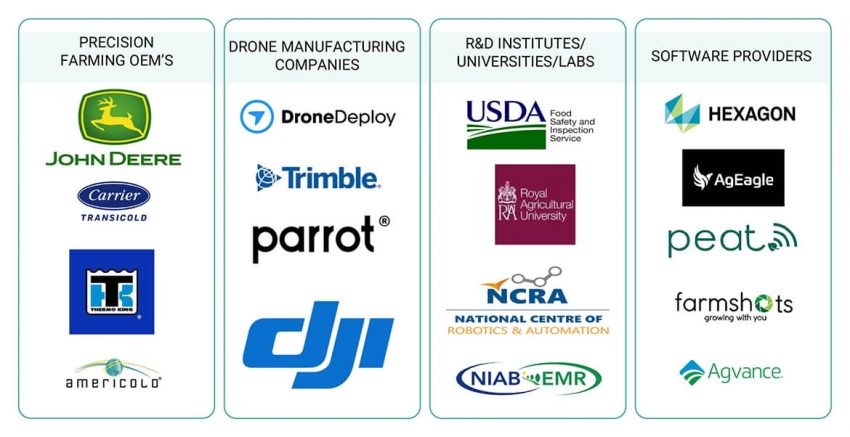The agricultural food loss reduction solutions market is projected to grow from USD 14.50 billion in 2025 to USD 22.50 billion by 2030, at a CAGR of 9.2%. This steady expansion is fueled by the rising need to enhance supply chain efficiency, minimize wastage, and maintain food quality from farm to consumer. As global food demand continues to surge, stakeholders across agriculture, logistics, and storage are adopting advanced solutions to reduce losses at every stage of the value chain.
Technologies such as cold chain systems, real-time monitoring, precision harvesting equipment, and storage optimization tools are critical in addressing challenges like spoilage prevention, temperature control, inventory management, and timely transportation. These solutions ensure perishable commodities—including fruits, vegetables, dairy, meat, and seafood—reach markets in optimal condition.
Request a PDF Brochure – Learn about key players, technological innovations, and market opportunities in one comprehensive guide.
Why the Market is Growing
Technological innovations, digital integration, and sustainable practices are expanding opportunities in this sector. Supportive government policies, global food security initiatives, and consumer preference for traceable, high-quality produce are further driving adoption. Consequently, manufacturers and service providers are focusing on product innovation, geographic expansion, and strategic partnerships to strengthen their market presence.
Overall, agricultural food loss reduction solutions are becoming indispensable in modern agri-food supply chains, improving both economic value and sustainability.
Key Players in the Market
Some of the leading agricultural food loss reduction solutions companies with a strong global footprint include:
- Cargill (US): Partnered with TechnoServe in May 2023 to scale post-harvest loss reduction programs in sub-Saharan Africa, improving grain storage and minimizing farmer losses.
- Bühler Group (Switzerland): Launched new optical sorting equipment for cereals and pulses in March 2023, enabling early spoilage detection and minimizing wastage.
- BASF SE (Germany): A major player in developing solutions that enhance supply chain efficiency and preserve product quality.
- Corteva Agriscience (US): Focuses on innovations in crop protection and sustainable agricultural practices.
- Lineage Logistics (US): Expanded its cold storage network in Asia Pacific in July 2023, enhancing cross-border food security through efficient refrigeration and transport.
These agricultural food loss reduction solutions manufacturers adopt strategies such as technology partnerships, product innovation, and geographic expansion to enhance efficiency across the agricultural value chain.
Innovative Contributors to Food Loss Reduction
Deere & Company (John Deere, US)
John Deere designs and manufactures advanced machinery for agriculture, construction, and forestry. Its agriculture & turf division delivers automation and robotics solutions to improve farm productivity and minimize resource waste. Innovations such as AI-powered See & Spray technology enable precise herbicide and pesticide application, reducing crop damage and input wastage.
With operations in over 30 countries—including Germany, Brazil, India, the Netherlands, and the UK—John Deere leverages a global presence to implement precision farming technologies that significantly reduce on-farm and post-harvest losses.
DJI (China)
Headquartered in Shenzhen, DJI is a global leader in drones and unmanned aerial systems. Their agricultural solutions include drones like MG-1, MG-1S, T16, and P4 Multispectral for targeted spraying, crop surveillance, and health analysis. By integrating aerial imaging with real-time data management, DJI empowers farmers to make informed decisions that increase yield while reducing waste.
With facilities worldwide and offices in the US, Germany, Japan, South Korea, and more, DJI is strategically positioned to meet the growing demand for precision agriculture and food loss reduction technologies.
Market Ranking & Outlook
The agricultural food loss reduction solutions players such as Deere & Company, DJI, Lineage Logistics, Bühler Group, and Cargill are driving market growth. Their technologies—ranging from smart machinery and data-driven systems to aerial monitoring and cold-chain infrastructure—enhance efficiency across the agricultural value chain.
Mid-tier and smaller players focus on niche applications, geographic expansion, and localized solutions, gradually establishing a presence in the market. Collectively, these companies accelerate market growth through digital integration, automation, and sustainable practices that tackle food system challenges from farm to table.
Frequently Asked Questions
- What are agricultural food loss reduction solutions?
- How do agricultural food loss reduction solutions help improve supply chain efficiency?
- Who are the major agricultural food loss reduction solutions companies globally?
- What technologies are used to minimize post-harvest losses in agriculture?
- How do cold chain systems contribute to reducing food wastage?
- What role does precision agriculture play in agricultural food loss reduction?
- How are agricultural food loss reduction solutions manufacturers innovating to meet market demands?
- Which crops or commodities benefit most from food loss reduction technologies?
- What are the key challenges faced by agricultural food loss reduction solutions players?
- How is the market projected to grow over the next five years?
- What government policies or initiatives support agricultural food loss reduction?
- How do digital monitoring and real-time data tools enhance food preservation?
- What are some examples of strategic partnerships in the food loss reduction market?
- How can small and mid-tier companies compete in this market?
- How do consumers benefit from improved agricultural food loss reduction practices?

